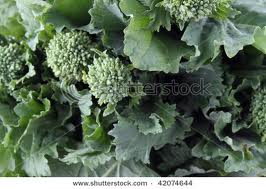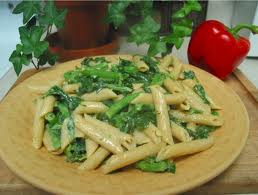Rapini originated in Southern Italy and Sicily, and is a favourite in Italian cuisine. It was also domesticated in China, and is a staple in Asian cooking. The small yellow flowers look like small, immature broccoli but it never forms the characteristic flower head, and though some of its common names include the term 'broccoli', they are not botanically related. Rapini is more closely related to the turnip, as seen in its turnip-like leaves. It is an annual or biennial depending on variety.
Botanical Name: Brassica rapa, subsp.rapa. Also called: broccoli raab, broccoletto, spring raab, broccoli rabe, turnip broccoli. Varieties/Cultivars: Sessantina, Spring Raab, Sorrento, Zamboni
Hardiness Zone: 5 through 8 (Vancouver is 6A-8A)
Harvest (from direct seed): 45 to 60 days
Size at Maturity: 12 to 20" h. by 12 to 18 " w.
Planting Dates: Late August, then under cover until February
Harvest Dates: 4-6 weeks after planting
Ideal Site & Soil
Full sun is best for Rapini. Plant this member of the cabbage family in soil where Brassicas (cabbage family) have not grown for at least 4 to 5 years. Plant in fertile, humus rich, well drained soil with a pH of 6 to 7.5.
Cultivation / Plant Care
Rapini is a good winter crop, and can be grown in a cool greenhouse or outside under shelter all winter, if it doesn't freeze, as long as there is enough sun. Hot temperatures will cause it to bolt (grow tall and go to seed), like lettuce.
Prepare the row by digging in lots of compost and add all-purpose fertilizer like seed meal or an organic fertilizer of 5-5-5. Add lime if needed to achieve soil pH of 6 to 7.5. Keep the soil moist but not soggy. Keep plants well fed. Rapini likes lots of nitrogen, so if plants are not growing quickly or if you notice any decline in dark green colour, apply liquid fish fertilizer at half strength every two weeks.
Problems & Pests
Protect seeds and transplants with floating row cover (Reemay) to guard against pests like root maggot, leaf miner, cabbage fly. See pests on the Winter Brassica Crops page (under Resources tab on the main website) for their control.
Harvest Notes
Rapini is ready to harvest when the flower buds have formed, are just ready to open, but do not yet show colour. Although you can still eat rapini after the flowers open it becomes strong, peppery, and gets tough.
Nutrition & Recipes
Rapini contains calcium, potassium, iron and vitamins K, C, and A and is rich in antioxidants. It is a good source of vitamins A, C, and K as well as potassium. To store, refrigerate unwashed in a plastic bag with holes, for up to 3 days.
Author: Shirley Cole, MG, Vancouver Chapter






